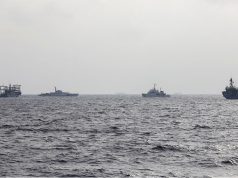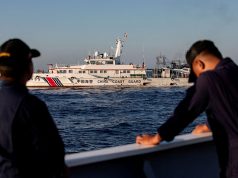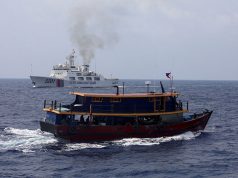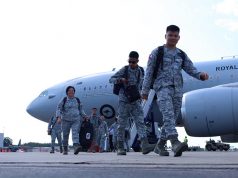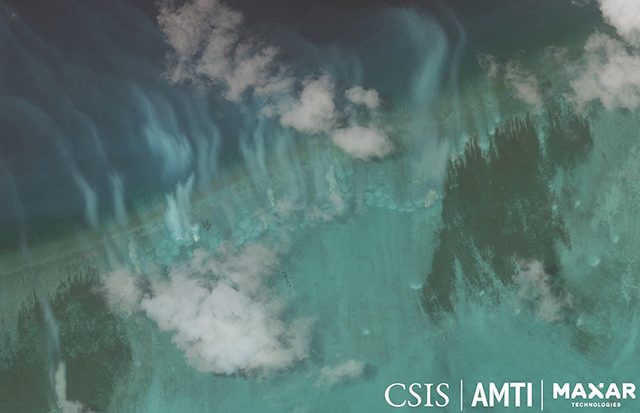
They appear as ordinary Chinese fishermen manning trawlers in the South China Sea, but they are military-trained militia deployed as another “gray zone tactic,” that is, an action to gain advantage without provoking a convention military response.
The relatively new sea force in the strategic waterway has recently been believed to be behind laser attacks against an Australian naval helicopter patrolling over the West Philippine Sea last May.
The Center for Strategic and International Studies, a Washington-based think tank, reported that the maritime militia is engaged in “patrol, surveillance, resupply, and other missions to bolster China’s presence in contested waters in the South and East China Seas.”
A professor of strategy at the U.S. Naval War College’s China Maritime Studies Institute further explained that China has been using its maritime militia to advance its influence throughout the South and East China seas.
Andrew Erickson said in a DefenseNews report:
“China’s maritime militia is a component of China’s armed forces and is employed in so-called gray zone operations, or low-intensity maritime rights protection struggles, at a level designed to frustrate effective response by the other parties involved.”
These militia members don’t work as full-time soldiers, Erickson wrote, but they have undergone similar military training by the China’s People’s Liberation Army Navy.
“Some of the best-trained and best-equipped members engage in overt paramilitary activities such as the harassment of foreign vessels operating near Chinese-held islets or dangerous standoffs with vessels from neighboring states,” the professor said on his website.
The US Department of Defense made a clearer definition of China’s maritime militia in its China Military Power Report in 2019.
The agency calls the militia as “a subset of China’s national militia, an armed reserve force of civilians available for mobilization.”
China is not hiding it
China acknowledges this paramilitary fleet as part of its state security. In his report, DefenseNews’ Mike Yeo also wrote that the militia vessels’ prolonged stay in areas of the West Philippine Sea such as Subi and Mischief Reefs is telling:
“The strongest evidence that those trawlers are part of the maritime militia status stems from the substantial amount of time they spent loitering in the waters around the Philippine-occupied Thitu and Loaita islands, according to CSIS. High-resolution satellite imagery of the vessels also suggests they spend little, if any time, fishing,” Yeo wrote.
Recent incidents
Last May, suspected Chinese militia vessels targeted lasers during the flights of an Australian naval helicopter in the contested West Philippine Sea.
An article from South China Morning Post stated that helicopter pilots from the aircraft HMAS Canberra were “marked with lasers as they took part in the months-long Indo-Pacific Endeavour 2019 exercise.”
An academic official aboard the helicopter also spotted a Chinese warship while lasers were pointed at them from fishing vessels.
On June 9, another China-flagged trawler reportedly sunk a Filipino fishing boat that endangered the lives of 22 Filipino fishermen.
Supreme Court Senior Associate Justice Antonio Carpio, who has been outspoken about issues of sovereignty and jurisdiction in the South China Sea, argued that the culprit could be a vessel of Chinese militia.
“China’s maritime militia vessels have reinforced steel hulls purposely for ramming fishing vessels of other coastal states. No other coastal state has fishing vessels purposely designed for ramming other fishing vessels,” Carpio said.




